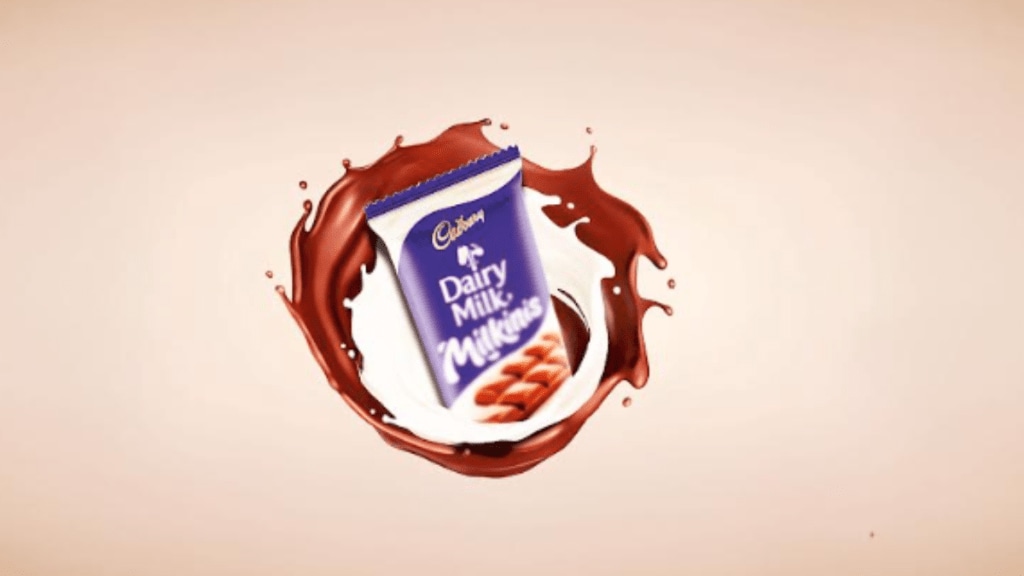Mondelez India, which has vehemently targeted young adults and adults with new products and goofy advertising over some decades now, seems to be switching gears. Its latest launch, Cadbury Dairy Milk Milkinis, is unabashedly “playful”. With crème-filled bars priced at 20 and40, it is looking to attract a younger and more carefree cohort.
“Milkinis marks an exciting new chapter for Cadbury Dairy Milk in India,” says Nitin Saini, vice president – marketing, Mondelez India, which commands over 65% share of the chocolate market in India. “Designed as a shareable treat, its crème-filled format naturally resonates with younger consumers.”
Cadbury’s advertising
For more than a decade, Cadbury’s advertising leaned into the world of romance and sophistication. Dairy Milk Silk with its “Kiss Me” jingle became shorthand for Valentine’s Day indulgence, while Bournville’s cocoa-rich positioning suggested a refined, adult palate. Now, Mondelez India is looking over its shoulders, towards school lunch breaks, impulse buys at the corner shop, and light-hearted sharing. To that extent, the company seems to be recalibrating its chocolate portfolio, balancing adult indulgence with a return to younger formats that once defined its mass-market appeal.
The branding choice too is telling. “The choice of the name ‘Milkinis’ is intriguing. It’s a throwback to the brand’s original promise of ‘a glass and a half of milk’ which was visualised in packaging and communication, a promise of a delicious treat which also contained much-needed nutrition. Seems like Cadbury’s is leaning into this heritage with the choice of name,” Sampath observes.
The stakes are getting increasingly higher. While volatile cocoa prices and health concerns over sugar have rattled players, new categories like artisanal, vegan and health-focussed products are giving traditional formats a run for their money. And while the size of India’s chocolate market is set to double by 2033, per capita consumption remains low at around 200 gm annually.
Given that, the affordable impulse-snacking segment, which includes bars under 50, is back with a bang with key drivers for penetration and consumption frequency. Says Yasin Hamidani, director, Media Care Brand Solutions, “Price-sensitive shoppers are trading down in pack size, not out of the category. NIQ shows a clear tilt toward smaller packs and continued price sensitivity, especially beyond metros. That makes20-`40 the oxygen for penetration and frequency in general trade and Tier-2/3, and a feeder to higher price ladders.”
Against this backdrop, the choice of a crème-filled format is no accident. “We’re seeing a clear consumer shift towards everyday affordable indulgences that are multi-sensorial and shareable. Milkinis taps directly into this trend by offering a crème-filled format at accessible price points. It’s part of our broader innovation pipeline aimed at continually reimagining chocolate for today’s evolving snacking occasions,” says Saini.
Mondelez frames Milkinis not as a shift but as an expansion. “Cadbury Dairy Milk has always been a brand that transcends age groups, loved equally by kids and adults. With Milkinis, we see an opportunity to deepen our connection with younger audiences while continuing to delight families and adults who enjoy light-hearted formats. It’s less about shifting the mix and more about widening the brand’s appeal,” Saini says. The good news is, Dairy-based chocolates comprise the biggest segment in India’s `20,000-crore chocolate market, even outpacing mithais in the metro markets with 12-14% CAGR over the last couple of years.
For a bigger bite
Analysts note that the move puts Cadbury in direct competition with rivals who have carved strongholds in this niche. Nisha Sampath, managing partner at Bright Angles Consulting observes that Ferrero, Kinder and Mars all have indulgent, crème-filled snacking entries in the affordable, everyday price point. “Cadbury’s has always stood for the classic, quintessential chocolate bar, but to keep up with times, it’s also important that the brand evolves beyond it,” she says. While Cadbury already connects with young audiences through 5 Star, that skew is more teenage; she believes. “Milkinis will appeal to a younger, school-going demographic.”
For Mondelez, the bet is that Cadbury’s long-standing equity will give Milkinis the edge in a crowded crème-filled segment. The company is banking on the trust and familiarity of Dairy Milk to introduce consumers to a lighter format while still keeping it within reach at accessible price points. By positioning Milkinis as both differentiated and affordable, Mondelez hopes to reimagine everyday chocolate consumption without losing mass appeal.
Experts look at the launch not as a strategic U-turn but as a careful rebalancing of the portfolio. By introducing a milk-crème format at the 20–40 impulse tier and backing it with a 360 degree marketing push, Mondelez is widening its entry ramp for kids and teens while continuing to sustain premium offerings like Silk and Bournville. The approach is designed to expand reach at the base without diluting equity at the top end, they say.
Saini explains that the communications strategy has been designed to mirror Milkinis’ light-hearted positioning. While Silk’s perception relies on indulgence and Bournville carries a more premium charm, Milkinis is based in light-heartedness and joy, making it instantly relatable to younger and young-at-heart audiences. Mondelez has rolled out a nationwide campaign spanning television, digital platforms, and influencer activations, all designed to create a vibrant world.

